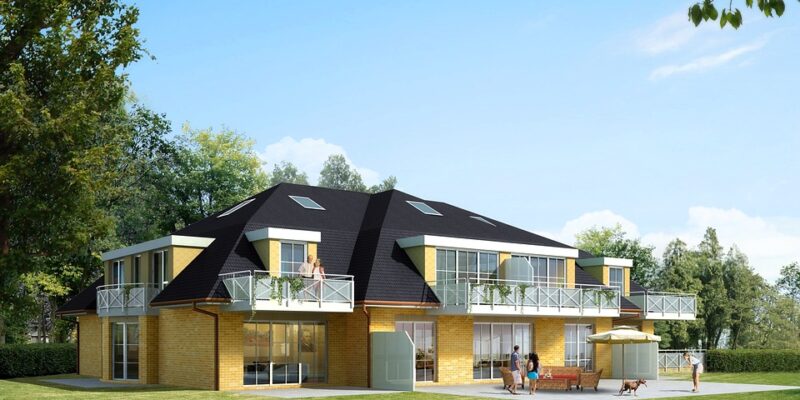Advancements in Medical 3D Visualization Technology
In recent years, there have been significant advancements in medical 3D visualization technology that have revolutionized the way healthcare providers diagnose and treat patients. From visualizing complex anatomical structures to planning intricate surgical procedures, 3D visualization technology has become an indispensable tool in the medical field. Here are some of the key advancements in this groundbreaking technology:
Improvements in Imaging Techniques
One of the key advancements in medical 3D visualization technology has been the improvements in imaging techniques. Traditional imaging technologies, such as X-rays and CT scans, provide valuable information about a patient’s condition, but they only offer a two-dimensional view of the body. With the advent of 3D imaging technologies, such as MRI and ultrasound, healthcare providers can now create detailed 3D models of a patient’s anatomy. This allows for more accurate diagnosis and treatment planning, as well as improved patient outcomes.
Virtual Reality and Augmented Reality
Another major advancement in medical 3D visualization technology is the integration of virtual reality (VR) and augmented reality (AR) into healthcare applications. VR and AR technologies allow healthcare providers to immerse themselves in three-dimensional virtual environments, enabling them to visualize and interact with complex anatomical structures in ways that were previously impossible. Surgeons can use VR and AR simulations to practice and plan surgical procedures, while medical students can use these technologies to learn about the human body in a dynamic and engaging way.
Personalized Medicine
Advancements in medical 3D visualization technology have also paved the way for personalized medicine, in which treatment plans are tailored to individual patients based on their unique anatomy and physiology. By creating 3D models of a patient’s anatomy, healthcare providers can better understand the underlying causes of disease and develop targeted therapies that are more effective and less invasive. This has the potential to revolutionize the way diseases are diagnosed and treated, leading to better outcomes for patients and a more efficient healthcare system.
Collaborative Tools
In addition to improving diagnosis and treatment planning, medical 3D visualization technology has also enabled healthcare providers to collaborate more effectively with colleagues from different specialties. By sharing 3D models and virtual simulations, doctors can work together to develop comprehensive treatment plans that take into account the complexities of a patient’s condition. This collaborative approach has the potential to improve patient outcomes and reduce healthcare costs by avoiding unnecessary tests and procedures.
Applications of Medical 3D Visualization Technology
The advancements in medical 3D visualization technology have opened up a wide range of applications in the healthcare field. From surgical planning to patient education, 3D visualization technology is being used in innovative ways to improve the quality of care and patient outcomes. Here are some of the key applications of this groundbreaking technology:
Surgical Planning
One of the most common applications of medical 3D visualization technology is in surgical planning. By creating detailed 3D models of a patient’s anatomy, surgeons can visualize the intricacies of a surgical procedure before entering the operating room. This allows them to identify potential challenges and develop a precise surgical plan that minimizes risks and maximizes outcomes. In addition, 3D visualization technology can be used to create patient-specific surgical guides and implants, further enhancing the accuracy and safety of surgical procedures.
Medical Education
Medical 3D visualization technology is also being used to enhance medical education and training. By creating interactive 3D models of the human body, educators can provide students with a more dynamic and engaging learning experience. Students can explore anatomical structures in detail, visualize complex physiological processes, and practice surgical procedures in a virtual environment. This hands-on approach to learning not only improves retention and understanding but also prepares future healthcare professionals for the challenges of a rapidly evolving healthcare landscape.
Remote Consultations
With the rise of telemedicine and remote healthcare services, medical 3D visualization technology has become an essential tool for remote consultations. Healthcare providers can use 3D models and virtual simulations to communicate with patients and colleagues in different locations, enabling them to collaborate on diagnosis and treatment plans in real-time. This has the potential to improve access to care for patients in remote or underserved areas and reduce the need for unnecessary travel and hospital visits.
Rehabilitation and Physical Therapy
Medical 3D visualization technology is also being used in rehabilitation and physical therapy to improve outcomes for patients recovering from injuries or surgeries. By creating personalized 3D models of a patient’s anatomy, therapists can develop customized rehabilitation programs that target specific areas of the body and track progress over time. This data-driven approach to rehabilitation not only accelerates recovery but also reduces the risk of complications and re-injury.
In conclusion, the advancements in medical 3D visualization technology have transformed the way healthcare providers diagnose and treat patients. From improving imaging techniques to integrating virtual reality and augmented reality, this groundbreaking technology has opened up new possibilities for personalized medicine, collaborative care, and enhanced patient outcomes. As 3D visualization technology continues to evolve, we can expect to see even more innovation in the healthcare field, leading to a more efficient and effective healthcare system for patients around the world.
